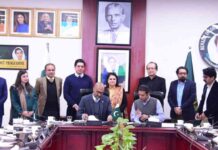In Pakistan, the automobile sector is a vital component of the national economy, a representation of scientific advancement, and a window into the government’s long-term planning. This blog explores how government policies have significantly shaped Pakistan’s automobile industry, looking at how they have affected employment, production, and customer behavior.
History Leading To Milestones
The inception of Pakistan’s automotive sector may be traced back to the implementation of policies that were designed to stimulate domestic production and decrease dependence on imports. The automobile Development Policy (ADP) 2016–2021 prepared the automobile industry for a revolutionary period of change.

Important policy measures that have aided in the promotion of new technologies, localization, and export enhancement include the Auto Industry Development and Export Policy (AIDEP 2021-26). Smaller automobiles were subject to lower tariffs and taxes under the Meri Gaari Scheme. This helped close the gap between motorcycles and cars and increase accessibility for young people.
Economical Impact And Advancements Over The Years
Initiatives that have increased foreign investment, brought in new players, and given more options have all had a big impact on the economy. The focus on domestic manufacturing has boosted employment and increased GDP. Encouraging adoption of new technologies has improved environmental regulations and vehicle safety. This has brought Pakistani autos into compliance with global standards.

Pakistani automobile consumers now enjoy higher quality, safety, and value for their money because to the government’s emphasis on consumer welfare. Policies have also attempted to guarantee timely car delivery and reduce the gap between supply and demand.
Challenges Faced And The Future To Come
Even with these developments, government policies have come under fire for undermining investments and causing uncertainty in the car industry. This has to lead unemployment ultimately. It’s always a difficult task to strike a balance between supporting regional producers and giving consumers options.
Government regulations are expected to drive the adoption of electric vehicles, enhance localization, and foster integration with international supply networks. AIDEP 2021–26 foresees Pakistan’s automotive sector as becoming both competitive and self-sufficient in the global market.
Unquestionably, government policies have influenced the development of Pakistan’s automobile sector. The industry’s progress, from promoting growth and innovation to meeting obstacles and adjusting to global trends, illustrates the intricate relationship between economic realities and legislation. Let’s just hope it all gets better for the years to come and our ride is as smooth as possible.
Stay tuned for more automotive stories like these; this is your soon-to-be favorite friendly neighborhood gearhead Zayaan, Signing Off!







































